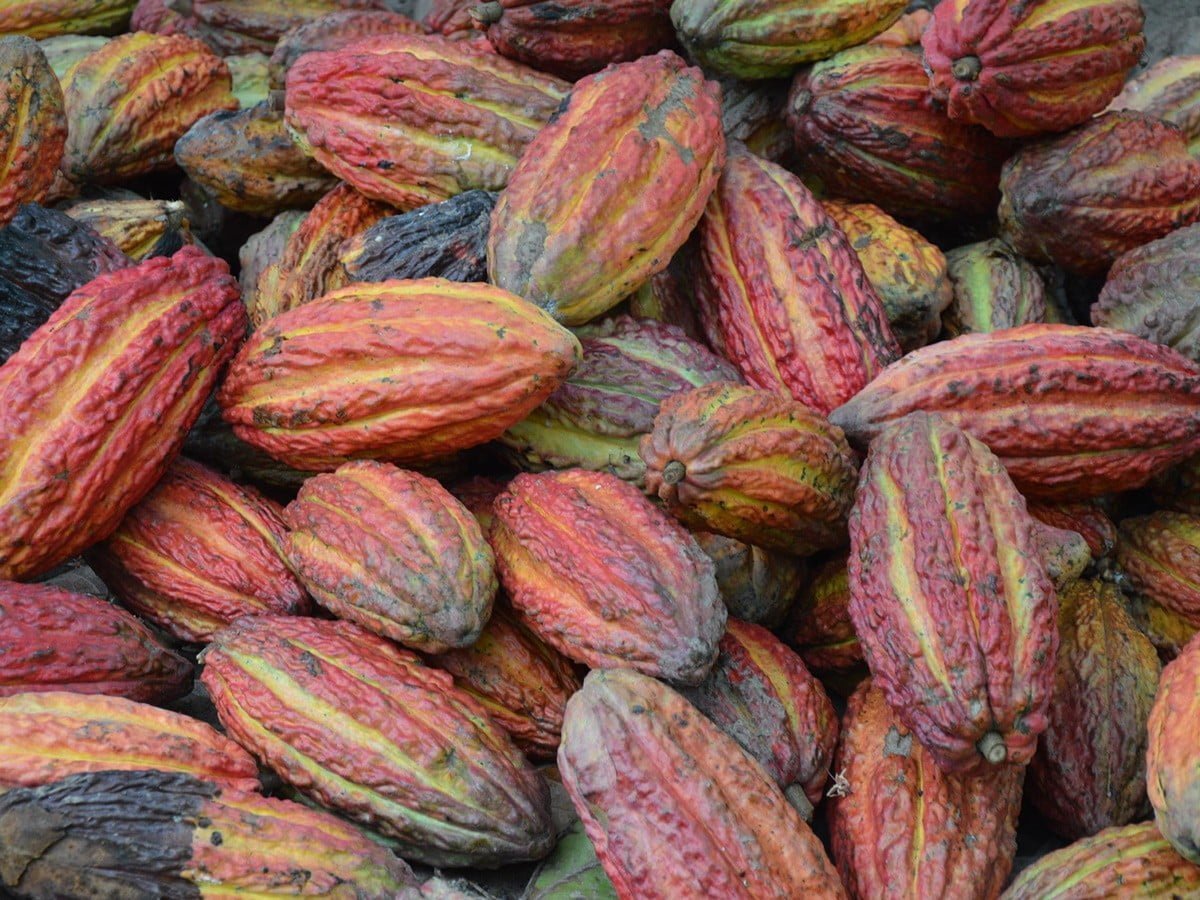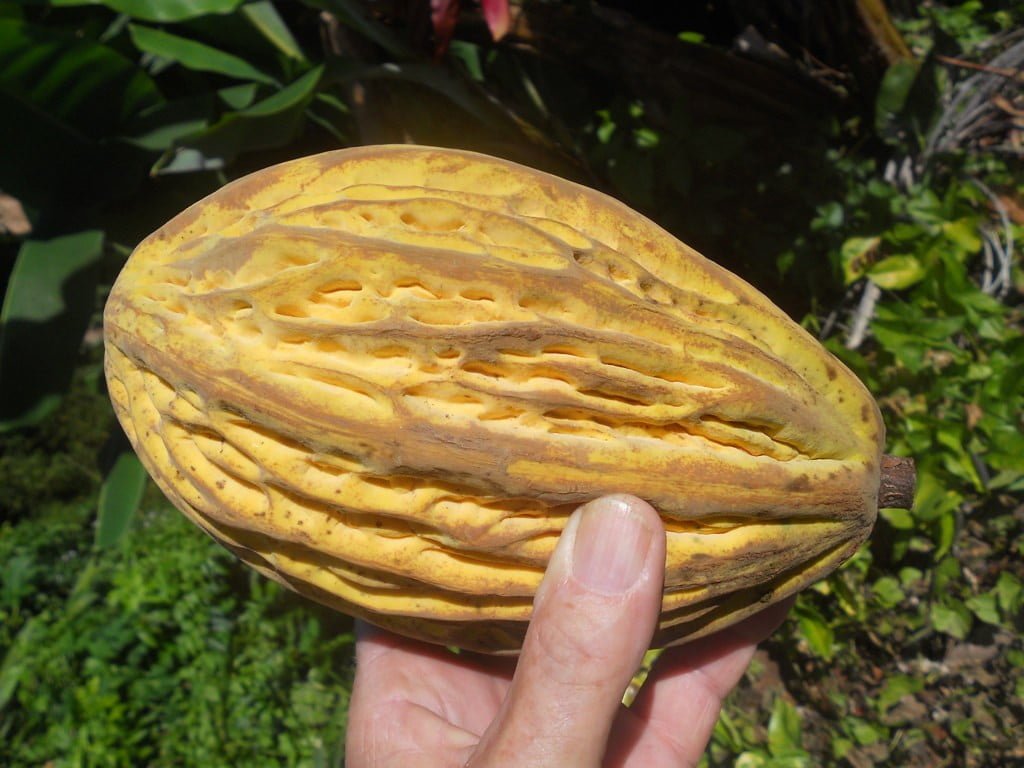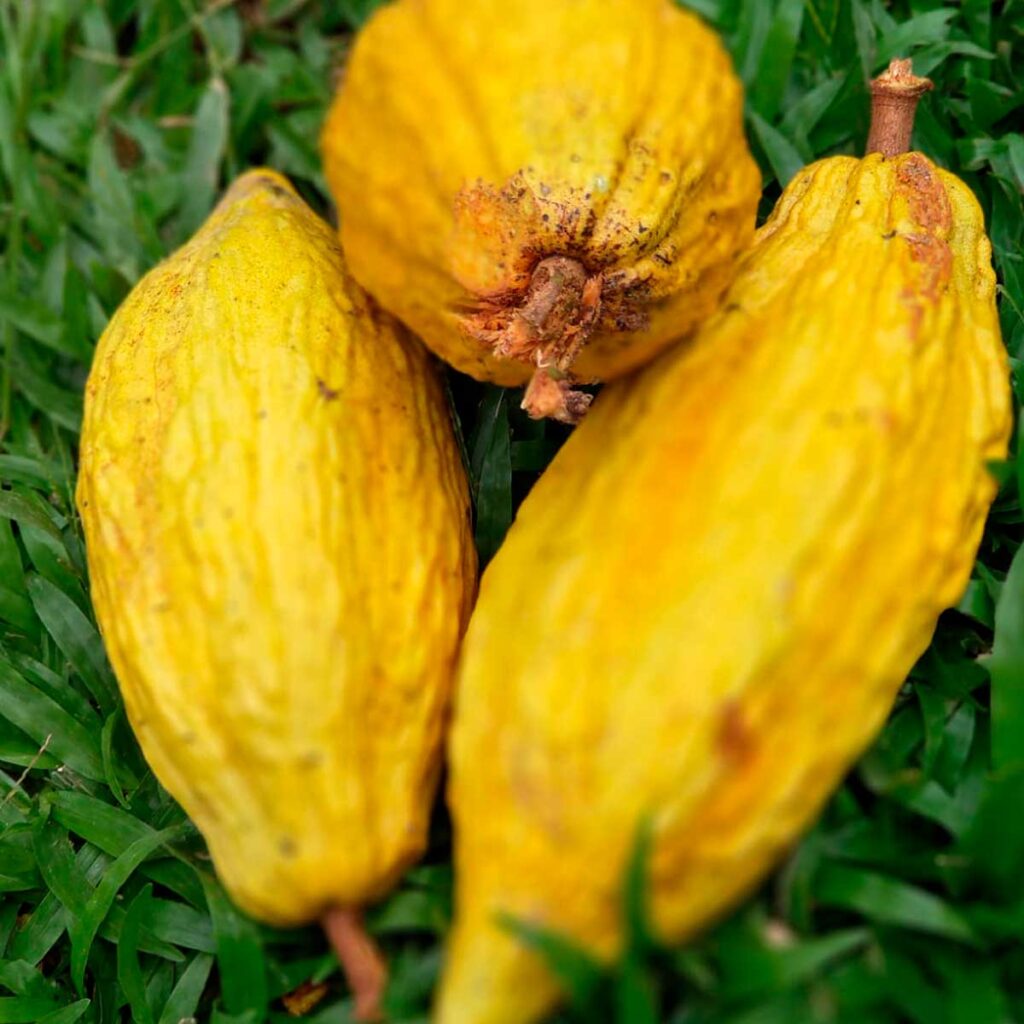Types of cacao. Grains: Criollo, Trinitario and Forastero

Featured products Learn more about our offer
View productsMany people who enjoy the benefits of cacao do not realise that there are many different varieties of this remarkable product. Even lovers of ground cacao beans typically only know that traditional, raw cacao and ground cacao are available for sale – and that’s usually where their understanding of the topic ends. Meanwhile, there are three types of cacao, each with many different varieties, differing in composition, aroma, and taste.
As reported by “World of Chocolate,” the differences between cacao types can be noticeable even in cacao beans from different growing regions. The nobler and better-selected the harvest, the higher its price [1], although the process of processing beans – fermentation, drying, and possible roasting – also has a huge impact on the final taste of cacao. Nevertheless, it is traditionally recognized that Criollo is the noblest variety of cacao, while Forastero is the most common. Is this opinion justified? Let’s check it out in this article!
Let’s start with cacao
Starting from the very beginning, we must first introduce our main character, which is the cacao tree: a small tree from the Malvaceae family, with the most well-known representative being the cacao tree proper (Theobroma cacao L.) – it is this tree that has dominated cacao cultivation in most regions of the world. Closely related to the Theobroma tree is the Herrania species, from which fruits can also be used to produce high-quality cacao. Both trees also have many varieties, such as Theobroma bicolor or Herrania umbratica, which only grows in Colombia.


Bicolor Cacao (Pataxte, Mocambo)
The flowers of the cacao tree proper resemble orchids and grow directly from the tree trunk. Cacao trees do not like strong sunlight, so they thrive best in the shade, for example, under banana trees or other trees providing shade from the sun. However, artificial varieties of cacao have been developed that also thrive in heavily sunlit areas. An example of this is the Ecuadorian cacao CCN-51 (Colección Castro Naranjal 51), invented by independent researcher Homero Castro in the 1960s.


CNN-51 cacao tree in Ecuador
Theobroma Cacao fruit?
The ripe fruit of the cacao tree (Theobroma Cacao L.) can range in colour from yellow through greenish to yellowish-red, truly red and reddish-brown. Their shape resembles American footballs, reaching an average length of 25 cm and having a thick shell. Inside, there is white, sweet pulp containing from 25 to 50 seeds arranged in five rows. Each seed, usually covered with whitish mucilage, is about 2-3 cm long.
The three main types of cacao, namely Criollo, Forastero and Trinitario
Traditionally, cacao has been divided into three species – Criollo, Forastero, and Trinitario. This classification originated in the 1940s [5], but the names of two out of three species were given centuries ago by the Spaniards. When asked by a person from Mexico what the word Criollo means to them, they will probably answer that it is a “mixture” or “hybrid.” Nevertheless, the word “criollo” originally meant individuals born in South America, whose parents came from North America or Europe. Apparently, Criollo cacao was the first variety encountered by the Spaniards, and for this reason, the translation of this word as “indigenous” can be encountered. The rest of the cacao was called Forastero, meaning “foreign.” The matter with Trinitario is much simpler because it refers to a cross between Criollo and Forastero, bred in Trinidad – hence the name of this variety. However, the cacao tree disregards our official classification and happily crosses with each other – but we will talk more about this at the end of this article.


Criollo cacao fruit


Ocumare dried cacao beans from Venezuela
A video showing the types of cacao
In this short video you will see the basic varieties of cacao.
Criollo cacao
Criollo is a noble and very rare group consisting of many varieties. It accounts for only 1% of global production, although it dominated worldwide just 200 years ago. It originates from Venezuela and Colombia, and today it is also cultivated in, among others In Mexico, Colombia, Peru, Madagascar, Sri Lanka and the Caribbean region. Among the Maya, Criollo cacao was considered the food of the Gods. [3]. Obtaining good yields from this variety is difficult because the trees are very sensitive to adverse external factors. Crop yields are significantly lower than with Forastero.
Types of Criollo Cacao Example from Venezuela
CRIOLLO GUASARE CACAO
It is grown south of Lake Maracaibo. Currently, its plantations are quite small. It is characterized by a green fruit with a thin and slightly rough shell. The quality of this cacao is excellent .
CRIOLLO CHUAO CACAO
Perhaps the most famous variety in the world, cultivated in the Chuao region in the state of Aragua. It is classified as “fine” cacao.
CACAO CRIOLLO PORCELAIN
Cultivated in the south of Lake Maracaibo. It has a special flavor and is classified by experts as “extra fine” cacao. It is considered to have the best genetic quality of all cacao trees grown in Venezuela.
What does the criollo cacao fruit look like?
Criollo tends to have elongated fruits with rough and bony yellow skin, with clearly marked ten grooves.
What do fresh criollo beans look like?
Criollo grains are round and white or pink in the center. After fermentation and drying, they acquire a complex and delicate flavour reminiscent of caramel, nuts, and vanilla. Criollo cacao is the primary ingredient used in the production of luxury chocolate.
Forastero cacao
Forastero originates from the Amazon Basin, hence it is also known as “Cacao Amazonico.” Due to its high yields, this cacao is also called “Cacao Corriente,” meaning “ordinary cacao.” Currently, it is mainly cultivated in Africa (Ghana and Ivory Coast), although the Spaniards originally imported this cacao from Venezuela. Currently, Forastero has dominated the global cacao market: according to various sources, this variety accounts for even 85-95% of global production. Such a large share is due to its relatively low requirements and ease of cultivation (if such terminology can be used in relation to cacao trees). It is relatively resistant to diseases and pests, and also grows faster and yields more than the other groups. [4]. There are at least several varieties belonging to Forastero, which differ in appearance. These include varieties such as Amelonado, Cundeamor, or Calabacillo.
What does the forastero cacao fruit look like?
Forastero has swollen fruits resembling melons with smooth yellow skin. The grooves on the skin are barely visible.
What do forastero beans look like?
The grains are elliptical and purple in the center.
Trinitario Cacao
Trinitario is a cacao with a delicate flavor. It is a hybrid of the two above-mentioned varieties: Criollo and Forastero, selected in the 17th century. The trees were brought from Venezuela to Trinidad, and this decision proved to be a bullseye. For several decades, Trinidad produced the most desirable cacao beans, but currently, the share of Trinitario in the global market is below 10%. Trinitario possesses, on one hand, the aroma of Forastero, and on the other hand, the delicate taste of Criollo.
What does the trinitario cacao fruit look like?
Trinitario has elongated, more swollen fruits than Criollo, with slightly rough skin in yellow or red colour with distinctly marked, five double grooves.
What do trinitario grains look like?
The beans are elliptical and pink or slightly purple inside.
We venture into the cacao forest, with 1000 cacao varieties.
The above traditional division into Criollo, Forastero or Trinitario turns out not to be very true, because according to the. The above traditional division into Criollo, Forastero, or Trinitario turns out to be not entirely accurate, according to research presented in the article “Geographic and Genetic Population Differentiation of the Amazonian Chocolate Tree (Theobroma cacao L)” [7], as many as 10 (!) cacao varieties were identified in the Amazon alone: Marañon, Curaray, Criollo, Iquitos, Nanay, Contamana, Amelonado, Purús, Nacional, and Guiana.
Cacao trees
If we add cacao growing in Africa, Indonesia, Kerala in India, or Madagascar to this list, it turns out that we can distinguish several more cacao varieties. Let’s add human-designed species to this, such as CCN-51, and we’ll immediately understand that traditional classifications simply don’t match reality.
Cacao trees (Theobroma Cacao L. and Herrania) love to crossbreed with each other, and new varieties of them are practically constantly being created. However, the taste of cacao, which is what interests us most, depends not only on the species of cacao tree but also on the processing process. Much also depends on the quality of the machines in which the cacao is ground, as well as other additional factors. Therefore, the common opinion that Criollo is the king, and Forastero or Trinitario are its less successful cousins, is incorrect – we can come across very weak Criollo and outstanding Forastero or vice versa! By trying various products containing cacao, it’s worth experimenting and getting to know new varieties to get a full picture of the rich palette of cacao flavors and aromas.
